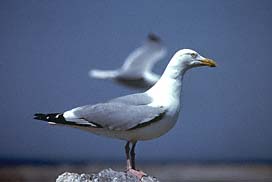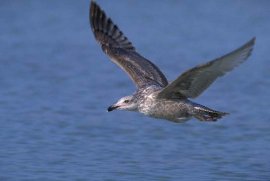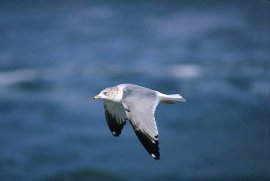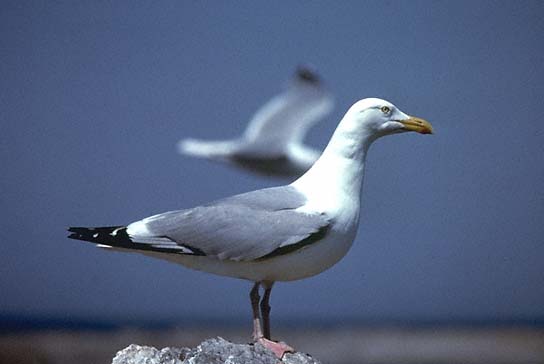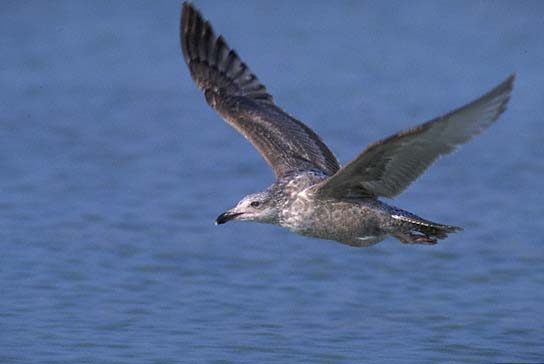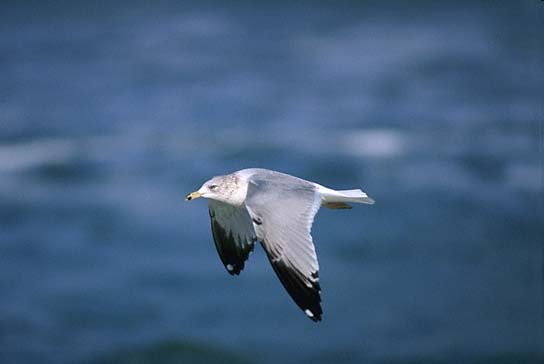Gull-like Birds
Description
23-26" (58-66 cm). Adult white with light gray back and wings; wing tip black with white spots; bill yellow with red spot on lower mandible; feet pink or flesh colored. First-year birds brownish. Acquires adult plumage in 4 years. See California Gull.
Discussion
This is the common "seagull" inland and along the coast. In recent decades it has become abundant, probably due to the amount of food available at garbage dumps, and has extended its range southward along the Atlantic Coast, often to the detriment of colonial birds such as terns and Laughing Gulls. Although a scavenger, it also eats large numbers of aquatic and marine animals and feeds on berries. It often drops clams and other shellfish on exposed rocks or parking lots in order to break the shells and get at the soft interior.

